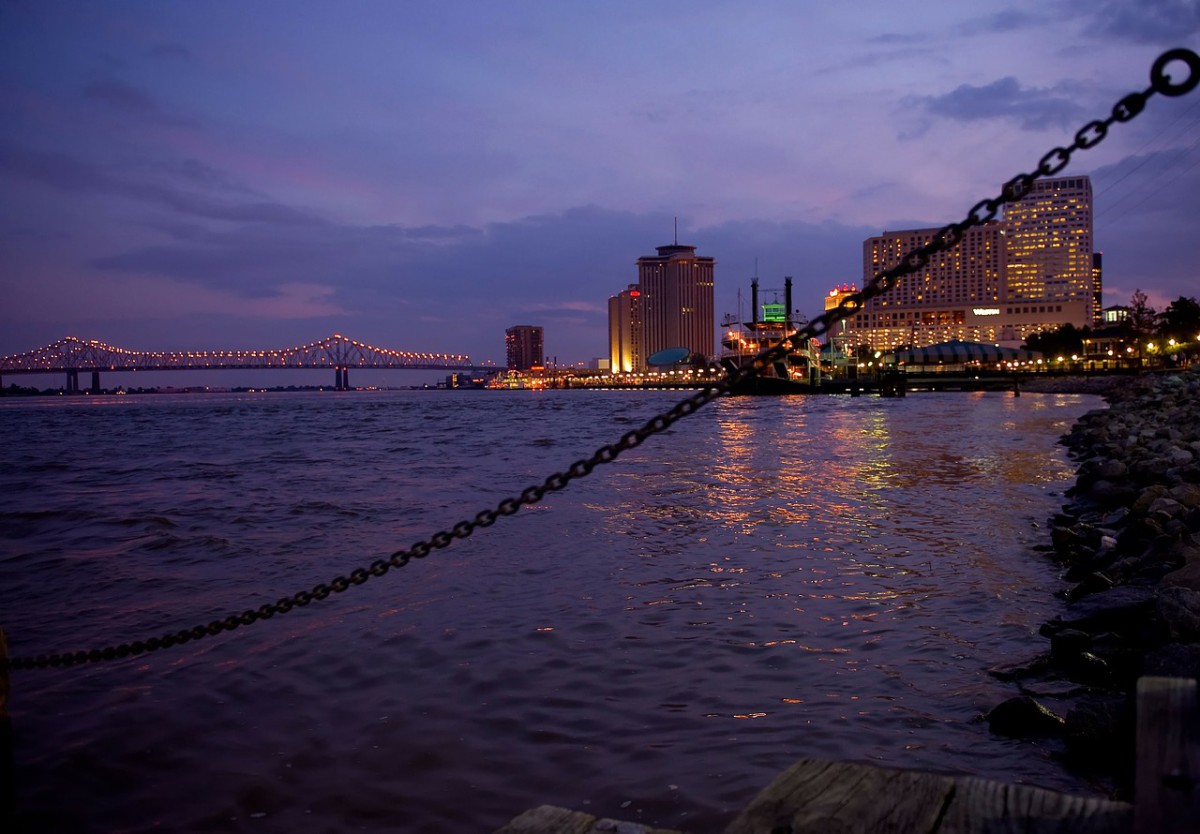Emerging from our nation’s domestic bloodbath relatively unscathed compared to most, New Orleans strutted into the 20th century with gusto. Electricity was all the buzz, lighting street lamps in the nighttime and powering streetcars at all times. The age of industry enveloped the booming metropolis, introducing innovative pump technology that helped to drain the surrounding swampland. New levees and drainage canals let residents live below sea level. Technology was providing a glimpse of our modern world.
Unfortunately, after World War II and during the height of social revolution, NOLA’s traditional roots took hold and resisted what, at the time, were progressive notions of racial equality. Enduring an embittered battle of character, New Orleans eventually grew with the rest of the country. Although many caucasian Crescent City natives emigrated in response to suburbanization and left many African-American residents impoverished and under-equipped, the city retained its global renown as a cultural center.
By popularizing Mardi Gras to the international event it has become, the city was able to create and cultivate an immense tourism industry. Literally hundreds of thousands of people would (and still do for that matter) fill the streets to the brim, running amok with excitement as they witnessed traditional and contemporary parades. In fact, this culture that is so unique to New Orleans has even inspired names as big as playwright Tennessee Williams, trumpeter Louis Armstrong, and chef Jean Galatoire, to name but a few.
Tragically and most recently, The Big Easy was devastated by Hurricane Katrina on August 29th, 2005. Guided by ill-preparation and lack of adept leadership, the metropolis was largely destroyed, with rising water levels flooding literally 80% of the city. With hundreds killed and thousands trapped, elected officials and government agencies attempted to make up for lost ground. However, the damage was done. A year after the hurricane in 2009, only half of the city’s former residents had returned home.
While the metropolis may still be recovering from tragedy even to this day, it has never lost its tradition, its culture, its heart. The warm sounds of live music still fill the air. Steaming hot Po’Boys still taste of delicious satisfaction. Bourbon Street still beckons the young and the restless. I can only hope future generations find the same fascination, the same passion and the same love for New Orleans that I have.
